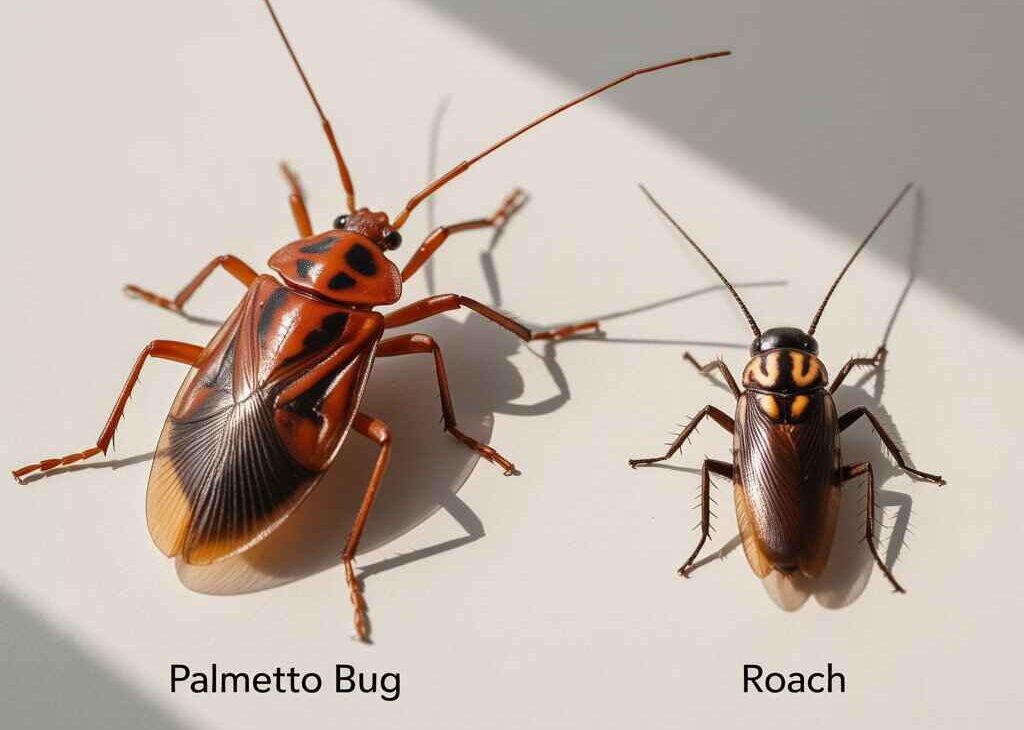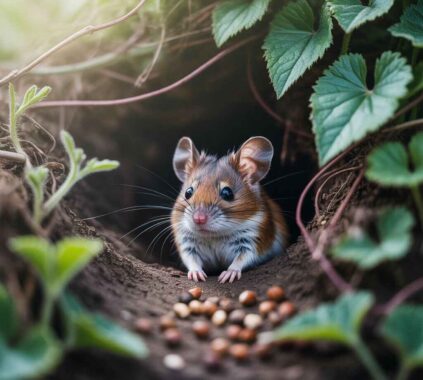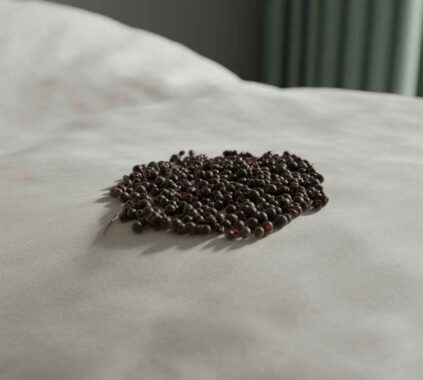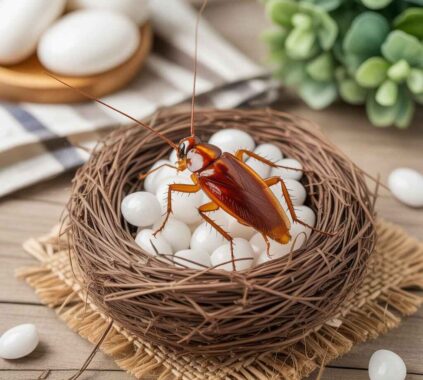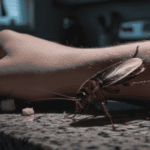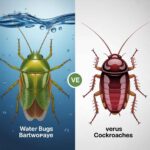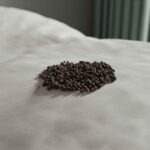Table of Contents
If you’ve ever seen a large brown insect scurrying across your floor or flying near your porch light, you’ve probably asked yourself, is that a palmetto bug or a roach? You’re not alone. These two names are often used interchangeably, but there are subtle differences in how people use them — and those differences matter when you’re trying to keep your home pest-free.
This article covers everything you need to know about palmetto bug vs roach, including how to tell them apart, what attracts them, what smells they hate, and how to get rid of them effectively.
What Is a Palmetto Bug?
A palmetto bug isn’t a special species of insect — it’s actually a nickname used in the southern United States for large cockroaches that often live outdoors. The name comes from their habit of hiding in and around palmetto trees, but you’ll also find them in mulch, woodpiles, and damp basements.
People use “palmetto bug” as a softer term for cockroach because, let’s be honest, nobody likes the word “roach.” In reality, when someone says palmetto bug, they’re usually talking about American cockroaches or smokybrown cockroaches — both big, winged roaches that can fly short distances and love humid conditions.
So yes, a palmetto bug is technically a roach, but a roach isn’t always a palmetto bug.
What Is a Cockroach?
A cockroach is any insect belonging to the order Blattodea. There are more than 4,000 known species around the world, but only a handful are considered household pests.
The most common types found in homes are:
- German cockroach — small, tan, and fast; loves kitchens and bathrooms.
- American cockroach — large, reddish-brown, and sometimes called a palmetto bug.
- Oriental cockroach — dark brown or black, prefers cool, damp places like basements.
- Smokybrown cockroach — shiny, dark mahogany, and often confused with palmetto bugs.
Cockroaches are incredibly adaptable. They can survive without food for weeks, squeeze through tiny cracks, and reproduce quickly. That’s why even a small infestation can turn into a major problem if ignored.
Palmetto Bug vs Roach Size
One of the most noticeable differences between a palmetto bug vs roach is size. Palmetto bugs are among the largest cockroach types, often growing between 1.5 to 3 inches long. They have long antennae and large wings that cover their entire abdomen.
Smaller roaches, such as the German cockroach, usually measure only about half an inch to an inch. These tiny invaders tend to live indoors and multiply rapidly, while the larger palmetto bugs prefer outdoor or semi-outdoor spaces.
So if you spot a large, reddish-brown roach with wings, it’s likely a palmetto bug, not one of the smaller household species.
What Attracts Palmetto Bugs
If you’re wondering why these pests keep showing up, it’s because your home offers what they crave most: food, moisture, and shelter.
Here’s what specifically attracts palmetto bugs:
- Moisture – Leaky pipes, damp basements, and humid bathrooms are ideal.
- Food sources – Crumbs, pet food, garbage, and even grease on kitchen surfaces draw them in.
- Warmth and shelter – Palmetto bugs prefer warm, dark places like attics, crawl spaces, or under mulch.
- Outdoor lights – These insects are sometimes drawn to lights near doors or windows and fly toward them at night.
Even though palmetto bugs typically live outdoors, they often wander inside homes when seeking cooler temperatures in summer or warmth in winter. Keeping your home dry, sealed, and clean is the best way to make it less inviting.
Palmetto Bug vs German Cockroach
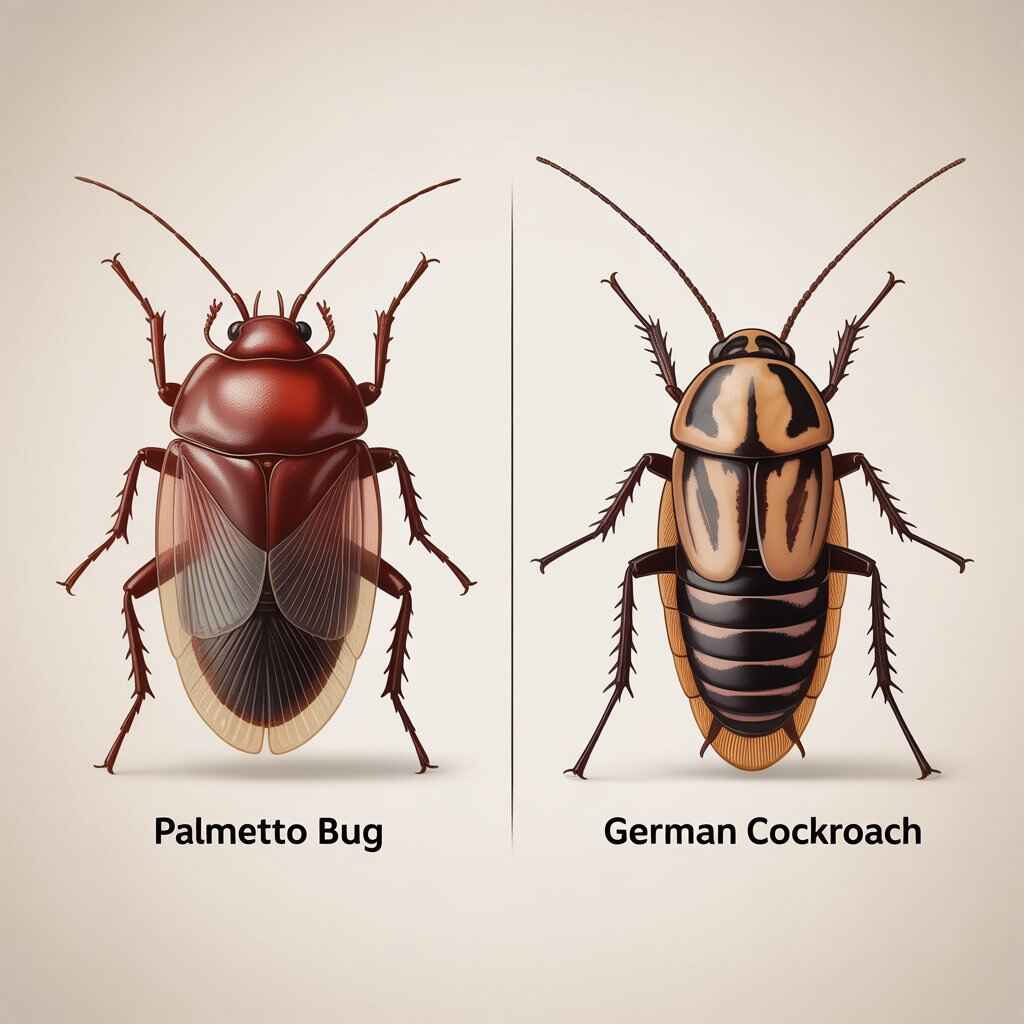
A palmetto bug vs German cockroach comparison shows how different these two are.
| Feature | Palmetto Bug | German Cockroach |
|---|---|---|
| Size | 1.5–3 inches | 0.5–0.8 inches |
| Color | Reddish brown or mahogany | Light tan with dark stripes |
| Habitat | Outdoors or damp basements | Indoors, kitchens, and bathrooms |
| Behavior | Can fly; often solitary | Cannot fly; infest in large numbers |
| Speed of reproduction | Moderate | Very fast |
While palmetto bugs may frighten you because of their size and flying ability, German cockroaches are more serious from a pest-control standpoint. They reproduce faster, spread bacteria, and are much harder to eliminate without professional help.
If you only see a few large roaches from time to time, you’re probably dealing with palmetto bugs. If you see many small ones — especially during the day — it’s likely a German cockroach infestation.
Palmetto Bug vs Roach Bite
People often ask if palmetto bugs bite. The short answer: not usually. Both palmetto bugs and most roach species are not aggressive toward humans. However, they can nibble on exposed skin or fingernails in extreme situations where food is scarce.
More commonly, these insects cause problems in other ways — by spreading bacteria like Salmonella and E. coli, contaminating food surfaces, and triggering allergies or asthma symptoms with their droppings and shed skins.
If you ever wake up with unexplained bites or irritation, it’s probably not from a roach. Instead, look for other pests such as bed bugs or fleas.
Do Palmetto Bugs Fly
Yes, palmetto bugs can fly, and that’s one of the main reasons people find them so startling. Adult American cockroaches and smokybrown cockroaches both have wings long enough to cover their bodies.
While they’re not strong fliers, they can glide or flutter short distances — especially when disturbed or attracted to light. You may notice them flying toward porch or entryway lights on warm evenings.
Smaller indoor roaches, like German cockroaches, have wings but rarely use them. So if you see a large roach flying, it’s almost certainly a palmetto bug.
Palmetto Bug vs Water Bug
Another common confusion is palmetto bug vs water bug. Many people use “water bug” as another nickname for roaches, but technically, they’re not the same thing.
A true water bug belongs to a different family of aquatic insects that live in ponds and feed on other insects. They have short antennae and actually bite — unlike roaches.
However, in everyday conversation, people often call large roaches found in wet areas “water bugs.” So when you hear someone say they saw a water bug in their bathroom, it’s probably a palmetto bug or American cockroach, not an aquatic insect.
What Smell Do Palmetto Bugs Hate
If you’re looking for natural deterrents, it helps to know what smell palmetto bugs hate. These insects rely heavily on their sense of smell to locate food and shelter, so strong or unfamiliar scents can repel them.
Here are a few smells they dislike:
- Peppermint oil – Acts as a natural repellent when diluted with water and sprayed around doors and windows.
- Citrus – Lemon and orange peels can deter them due to their acidic scent.
- Eucalyptus – Strong and sharp aroma that interferes with their sensory receptors.
- Lavender – Not as powerful as peppermint, but it can help keep them away from closets and drawers.
While these scents won’t kill palmetto bugs, they can discourage them from entering certain areas. For best results, combine these natural repellents with regular cleaning and sealing cracks around your home.
How to Get Rid of Palmetto Bugs
If you’re dealing with a palmetto bug problem, don’t panic. Here’s a step-by-step guide to help you eliminate them and keep your home pest-free.
Step 1: Inspect Your Home
Look around for signs of activity — droppings, shed skins, or live insects. Check under sinks, behind appliances, and in damp areas like basements or crawl spaces.
Step 2: Eliminate Food and Water Sources
Keep your kitchen spotless. Wipe down counters, store food in sealed containers, and take out trash regularly. Fix leaky faucets or pipes that provide moisture.
Step 3: Seal Entry Points
Use caulk or weather-stripping to close gaps around windows, doors, and foundation cracks. Pay special attention to areas where utility pipes or vents enter the house.
Step 4: Clean Up Outdoor Areas
Palmetto bugs often live outside and enter homes accidentally. Keep woodpiles, mulch, and leaf debris at least a few feet away from your foundation. Trim back vegetation touching the house.
Step 5: Use Traps or Baits
Sticky traps help monitor where bugs are active. Gel baits or bait stations can attract and kill them gradually. If the infestation seems large, consider a professional pest-control service.
Step 6: Maintain and Monitor
Even after you’ve stopped seeing them, keep up with cleaning and inspections. Regular maintenance is key to preventing reinfestation.
Why You Should Act Quickly
Ignoring a few roaches can quickly lead to a larger problem. Cockroaches reproduce fast — one female can produce dozens of offspring in a single month. Even if palmetto bugs mostly live outdoors, a few wandering indoors can lay eggs and start a colony.
Besides the “ick” factor, they pose health concerns. Their droppings and shed skins can trigger allergies and asthma, and they contaminate surfaces with bacteria.
The good news? Early action works. Cleaning, sealing, and using preventive measures can stop a small problem before it becomes an infestation.
FAQS:
1. Is a palmetto bug the same as a cockroach?
Yes. In the palmetto bug vs roach comparison, a palmetto bug is actually a type of cockroach — just a regional name for large roaches found in warm, humid areas.
2. What is the hardest cockroach to get rid of?
In the palmetto bug vs roach category, the German cockroach is the hardest to eliminate because it breeds quickly and hides deep inside homes.
3. Should I worry if I see one cockroach?
Yes, a single roach can mean more are hiding nearby. Whether it’s a palmetto bug vs roach, act fast — clean, seal entry points, and monitor for others.
4. Is a palmetto a water bug?
Not exactly. In most palmetto bug vs roach discussions, people use “water bug” as another name for large roaches, but true water bugs are aquatic insects, not roaches.
5. Do palmetto bugs bite?
Rarely. In the palmetto bug vs roach context, neither typically bites humans, but they can cause allergies or spread bacteria if infestations grow.
6. What does it mean when you see a palmetto bug?
Seeing one usually means there’s food, moisture, or an easy entry point nearby. In the palmetto bug vs roach scenario, both signal a need for quick prevention steps.
Final Thoughts on Palmetto Bug vs Roach
When it comes to palmetto bug vs roach, the truth is that they’re more alike than different. A palmetto bug is simply a regional name for large cockroach species commonly found in warm, humid areas.
Here’s what to remember:
- Palmetto bugs are large roaches, often found outdoors but capable of flying indoors.
- Smaller roaches, like German roaches, live indoors year-round and reproduce faster.
- Both types are drawn to food, warmth, and moisture.
- The best prevention is a clean, dry, sealed home.
Don’t wait until they’re everywhere. With regular cleaning, sealing entry points, and a few natural deterrents, you can keep your space comfortable and bug-free.v

